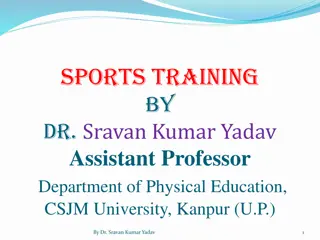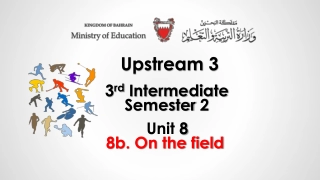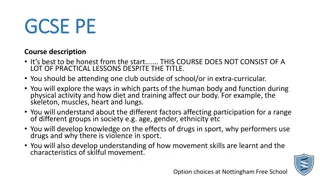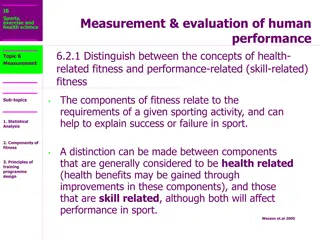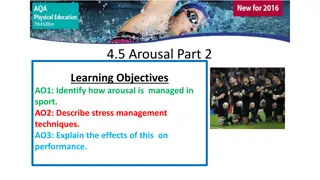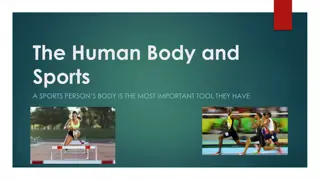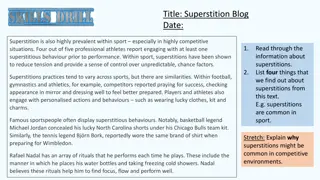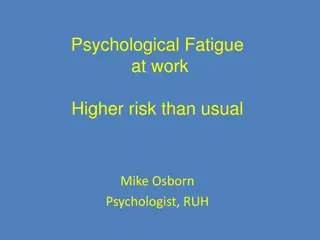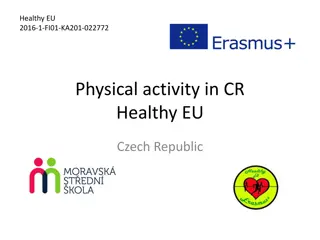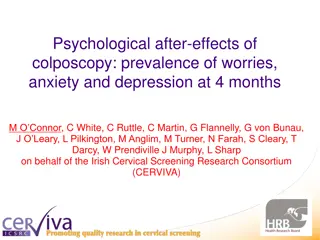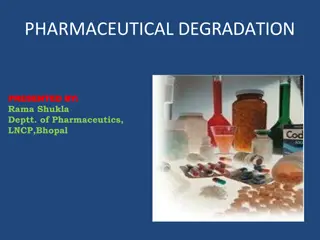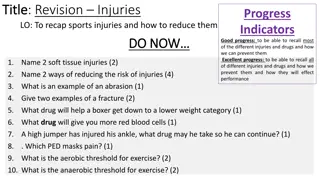Understanding Physical and Psychological Factors in Sports Performance
This lecture covers important aspects of sport performance, including muscle metabolic systems, recovery processes, nutrients used during activity, effects of smoking and heart disease on performance, body fluids and salt balance, and the impact of drugs on athletes. Topics discussed include ATP energy storage, phosphocreatine system, glycogen-lactic acid system, aerobic system, and the importance of continuous ATP production during physical activities.
Uploaded on Sep 17, 2024 | 0 Views
Download Presentation

Please find below an Image/Link to download the presentation.
The content on the website is provided AS IS for your information and personal use only. It may not be sold, licensed, or shared on other websites without obtaining consent from the author. Download presentation by click this link. If you encounter any issues during the download, it is possible that the publisher has removed the file from their server.
E N D
Presentation Transcript
Physical and Psychological Factors Affecting Sport Performance Physical and Psychological Factors Affecting Sport Performance Collage of medicine Physiology Dep. DR Abdulrahman Alhowikan
At the end of lecture students should know about 1-Muscle metabolic systems in exercise -Adenosine triphosphate -Phosphocreatine-creatine system -Glycogen-lactic acid & aerobic system 2-Recovery of the muscle metabolic systems after exercise& Oxygen debt& Recovery of muscle glycogen 3-Nutrients used during muscle activity 4-Effect of smoking on pulmonary ventilation in exercise 5-Effect of heart disease and old age on athletic performance 6-Body fluids and salt in exercise 7-Drugs and athletes
There are 3 metabolic systems exceedingly important in understanding the limits of physical activity. These are: 1 1- - Phosphocreatine 2 2- - glycogen 3 3- - aerobic system Phosphocreatine- -creatine glycogen- -lactic acid system aerobic system creatine system lactic acid system system
Adenosine-po3 PO3 PO3 Each one of the last 2 high energy phosphate bonds store 7300 calories per mole of ATP used to energize the muscle contractile process. Removal of the first phosphate converts the ATP into adenosine diphosphate (ADP), and removal of the second converts this ADP into adenosine monophosphate (AMP). All ATP in muscle is sufficient for only 3 seconds of muscle power.(Enough for one half of a 50-meter dash) It is essential to form new ATP continuously even during performance of short athletic events.
Contain high energy phosphate bond has 10300 calories/mole CP provide enough energy to reconstruct high energy bond of ATP. Most muscle cells have 2- 4 times as much CP as ATP Energy transfer from CP to ATP occurs within a small fraction of a second . Energy of muscle CP is immediately available for contraction just as stored energy of ATP.
Phosphagen energy system:- Formed of combined amounts of cell ATP+CP Together provide maximal muscle power for 8-10 seconds (enough for 100 meter run) Energy of phosphagen system is useful for maximal short bursts of muscle power ( 8-10 seconds).
a-Anaerobic metabolism ( glycolysis):- -During glycolysis :- glycogen of the muscle split into glucose without use of O2 -Then each glucose split into:_ 2 pyruvic acid + energy to form 4 ATPfor each one glucose molecule b-Oxidative stage:- - Pyruvic acid in the mitochondria in presence of O2 will form more ATP. - When there is insufficient O2 most of pyruvic acid converts into lactic acid which diffuse to blood stream
Characteristics ofGlycogen-lactic acid system Glycogen-lactic acid system can form ATP molecules( anaerobically) 2.5 times as rapidly as can oxidative mechanism of mitochondria Anaerobic Glycolysis can provide large ATP amounts needed for short moderate periods of muscle contraction ( as rapid as phosphagen system) Glycogen-lactic acid system provide 1.3-1.6 minutes of maximal muscle activity
Oxidation of foodstuffs glucose, glucose, fatty acids, and amino acids in the mitochondrai in presence of O2 produces energy that coverts AMP to ADP to ATP
Comparing Energy Supply Aerobic Mechanism,glycogen-lactic Acid System And The Phosphagen System
Energy from CP reconstitute ATP Energy from glycogen-lactic acid system reconstitute both CP&ATP Energy from oxidative metabolism of aerobic system reconstitute all other systems:-glycogen-lactic acid system & CP&ATP Reconstitution of Lactic acid system( removal of lactic acid):- Lactic acid causes fatigue so it should be removed by:- 1-portion converted into pyruvic acid which is oxidated by all body tissues 2-remaining is changed into glucose in liver to replenish glycogen stores of muscles
1-Oxygen Dept:- This is approximately about 11.5 Litres of O2 should be repaid after exercise is over. a- 2 Litres of stored O2 (0.5 L in lungs+0.25 L dissolved in body fluids+1 L combined with Hb+ 0.3 L stored in muscle myoglobin) -This is used within a minute of heavy exercise or for aerobic metabolism & replenished by breathing extra amounts of O2 above the normal needs. b- 9 Litres more O2 must be consumed to reconstitute phosphagen & lactic acid system -At first O2 uptake is high & fast to refill stored O2 & phosphagen system ( this is called a lacta cid O2 dept= 3.5 L) - The later portion of O2 dept takes 40 minutes for lactic acid system removal, it is of lower level breathing, It is called (lactic acid O2 dept =8 L
-Reduction of glycogen stores by heavy exercise needs days to be replenished -On high CHO diet , recovery occurs in 2 days -On high fat, high protein or on no food all show very little recovery Message:_ 1- Athlete should have high CHO diet before exercise 2- Not to participate in exhausting exercise during 48 hours preceding the event Read Guyton & Hall: Textbook of Medical Physiology 12E
During early stages of exercise& intense muscle activity body use CHO of muscle glycogen and blood glucose ,also fats as F.A & very little amino acids In endurance athletic last longer than 4-5 hours & during exhaustion muscle glycogen is depleted& muscle depend on fats CHO energy comes from muscle and liver glycogen Glucose solution given to athletes to drink during athletic event supply 30-40% of energy required during prolonged event as marathon race
1-Nicotine causes constriction of terminal bronchioles &increases resistance of airflow into & out lung 2-Smoke irritation causes increased fluid secretion into bronchial tree& swelling of epithelial layer 3- Nicotine paralyse the cilia on respiratory epithelial cell surface All lead to fluid & waste accumulation & level of performance reduced chronic smokers may develop emphysema(obstruction of bronchiols+chronic bronchitis+destruction of alveoli) so slight exercise cause respiratory pain
Cardiac disease reduce C.O& reduce muscle power Patient with CHF can not climb the bed There is 50% decrease in C.O between 18-80 years& decrease in breathing capacity, muscle mass & power with age Read Guyton & Hall: Textbook of Medical Physiology 12E
Exercise for 1 hour during endurance athletic event causes 5-10 pounds of weight loss in hot humid atmosphere due to sweat loss Loss of enough sweat reduce performance -5-10% loss of weight lead to cramps, nausea &serious effects ,so should be replaced Sodium tablets or supplemental fluids contain potassium and sodium in form of fruit juice -effect of aldosterone?? Potassium loss results increased secretion of aldosterone then loss of potassium in the urine, and sweat
Caffeine increase athletes performance Unusual androgens(male sex hormone) & anabolic steroids ( activate ) intake increase athletes performance in men& women but they increase risk of heart attacks due to hypertension In males male sex hormones decrease testicular functions & decrease natural testosterone secretion Women develop facial hair, stoppage of menses, ruddy skin and bass voice 3- amphetamine&cocaine improve performance but overuse reduce performance they are psychic stimuli -reaction of these drugs with epinephrene and norepinephrene (hormone adrenal medulla ) secreted during exercise cause death by ventricular fibrillation Read Guyton & Hall: Textbook of Medical Physiology 12E
Multiple studies have shown that body fitness, exercise &weight control have additional benefit of prolonged life(between 50-70) Reasons:- 1-reduce CVD, heart attacks, brain stroke and kidney disease due to low blood pressure, low blood cholestrol ,low LDL, and high HDL Body fitness reduce insulin resistance and type 2 diabetes Improved body fitness reduces the risk of breast, prostate, and colon cancer and reduces obesity
Reference book Guyton & Hall: Textbook of Medical Physiology 12E Thank you Thank you





